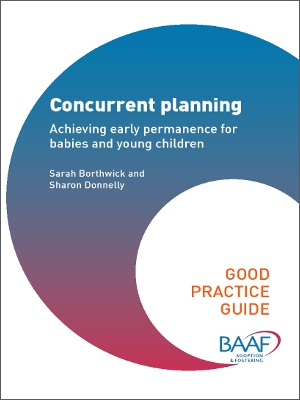
Concurrent planning
Is concurrent planning a solution to the challenge of increasing numbers of children in care, and to the amount of time that children have to wait before adoption? And what would this mean for adoption and fostering practice, recruitment, support and resourcing?
Concurrent planning – placing a child with carers who will foster the child while rehabilitation is pursued with birth parents, and who are prepared to adopt the child should rehabilitation prove unsuccessful – has been explored and used in the UK for some years, but mostly in a limited form. The approach has benefits for children, allowing for a small number of moves and carers, and a faster adoption placement, should this be the outcome. However, recruiting and preparing carers who can cope with the uncertainty and intensive contact demanded by the process is not an easy task. Concurrent planning has also been seen, at times, as a “back door route to adoption” rather than encouraging rehabilitation, as many infants in these schemes are adopted.
This practice guide considers aspects of concurrent planning which will be vital knowledge for practitioners and managers considering adding to their placement options for children in care, or expanding an existing service.
This guide is for practitioners, managers and all those involved in the use of concurrent planning for children in care.
Read the contents page and introduction
This book is available as an eBook only. It can be downloaded free by CoramBAAF members from the members’ area of the website or purchased below.
Questions about eBooks? Check out our FAQs
